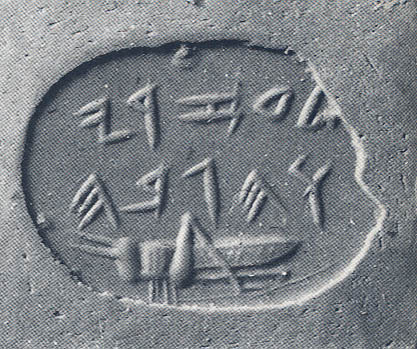Image Details

Courtesy of Nahman Avigad
When Amos pleads with God to forgive Israel and not let the locusts “devour the herbage of the earth,” God assents.
A locust appears as a family emblem in a wax impression (shown here, compare with previous photo and next photo) made by a half-inch-long seal. The Hebrew script on the seal dates it to the First Temple period, in the late eighth or seventh century B.C. The first word of the inscription, Azaryaw, on the top, is the seal owner’s first name, and the second word, Haggobeh or Haggebah, is his second name, which means “the locust.” This is the only Hebrew seal that includes a pictorial illustration of a name.
In the Old Testament, names that have the definite article “the” prefixed to them—as in “the locust”— belong to craft guilds or to families that have important jobs in the Temple or the government. The Azaryaw of this seal was probably a member of a family of priests or Temple functionaries. A seal-cutter of considerable skill made this seal to order for him, and did a superior job in executing the locust that illuminates it.
